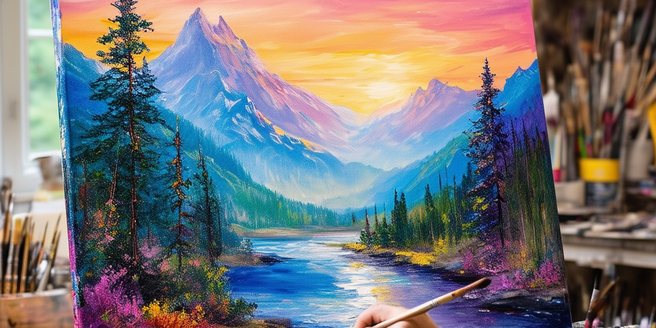
Understanding the Link Between Mindfulness and Creativity
Mindfulness can profoundly influence creativity by fostering present-moment awareness, allowing for deeper cognitive and emotional engagement. When individuals practice mindfulness, they often experience reduced stress and enhanced concentration, which are foundational for creative thinking. By being more aware of their thoughts and feelings, they can better recognize and abandon unproductive patterns, opening the door to innovative ideas and solutions.
Mindfulness practices enhance focus on tasks at hand, minimizing distractions that impede the creative process. This heightened concentration creates a mental space where new ideas can flourish.
By cultivating mindfulness, individuals foster a heightened sense of self-awareness, helping them let go of negative thought patterns and self-doubt, paving the way for a more open, innovative mindset. When people stop judging their ideas as either good or bad, they are more likely to explore unconventional solutions and take creative risks, leading to breakthroughs and novel approaches to problem-solving.
In summary, mindfulness supports creativity by enhancing focus, reducing stress, increasing self-awareness, and promoting a non-judgmental attitude towards thoughts and ideas. By fostering these mental states, mindfulness allows individuals to tap into their creative potential more effectively, leading to greater innovation.
How Mindfulness Enhances Cognitive Flexibility
Cognitive flexibility is the mental ability to switch between thinking about different concepts or to think about multiple concepts simultaneously. This skill is crucial in adapting to new situations and efficiently processing information. Mindfulness helps enhance this flexibility by training the brain to stay open and adaptable. Through consistent practice, mindfulness exercises encourage awareness of the present moment, reducing stress and anxiety. Regular mindfulness practice helps strengthen neural pathways associated not only with problem-solving but also with creative thinking. This routine creates a solid foundation for mental agility, allowing individuals to navigate complex cognitive tasks with greater ease. This increased cognitive flexibility allows individuals to approach problems from various angles, making it easier to find innovative solutions. By incorporating mindfulness into daily routines, people can experience improved focus, clarity, and overall mental health, which further supports enhanced cognitive functions. This holistic approach leads to a more resilient and resourceful mindset, equipped to tackle challenges in a dynamic and effective manner.
Mindfulness Techniques to Boost Creative Thinking
Several mindfulness techniques can boost creative thinking, including mindful meditation, mindful observation, and mindful awareness exercises. Meditative practices calm the mind, reduce distractions, and enhance focus, setting the stage for creative insights. Mindful observation and awareness exercises encourage individuals to notice details they might typically overlook, fostering a heightened sense of curiosity and openness to new experiences. This heightened awareness allows one to see the world from different perspectives, which is essential for innovative thinking.
Mindful observation trains the brain to pick up on subtle nuances, often leading to unexpected inspirations. Mindful awareness exercises might include body scans, where individuals focus on different parts of their body sequentially, paying attention to physical sensations without judgment. This exercise not only grounds one in the present moment but also sharpens sensory perception, contributing to creative capabilities. When combined, these mindfulness techniques collectively cultivate a fertile ground for creativity by promoting a relaxed, focused, and open state of mind, ultimately enhancing one’s ability to think outside the box and generate innovative ideas.
Overcoming Creative Blocks Through Mindful Practices
Creative blocks can be daunting, but mindful practices offer effective strategies to overcome them. Techniques such as mindful breathing, body scans, and journaling help clear mental clutter and reduce anxiety, which often hampers creativity. By focusing on the present moment, individuals can bypass negative self-talk and perfectionism, paving the way for creative ideas to flow more freely.
Mindful breathing involves paying attention to your breath as it moves in and out of your body, helping you stay centered and calm. Body scans involve mentally scanning your body from head to toe, noticing any areas of tension and consciously relaxing them. This technique can be especially useful for easing physical symptoms of stress that may be hindering your creative process.
Journaling is another powerful tool for overcoming creative blocks. By writing down your thoughts and feelings, you can gain a clearer understanding of the mental obstacles that are standing in your way. Incorporating regular mindfulness practices into your daily routine can have long-term benefits for your creativity. The more you practice, the more skilled you will become at managing stress and maintaining focus.
Real-Life Examples of Mindfulness in Creative Fields
Many artists, writers, and innovators have successfully integrated mindfulness into their creative processes. For example, renowned painter Georgia O’Keeffe practiced mindful observation of natural landscapes to capture intricate details in her work. Similarly, writer and filmmaker David Lynch uses Transcendental Meditation to access deeper layers of creativity and intuition. These practices not only improve their artistic outputs but also enrich their personal lives, fostering a deeper connection to their work and the world around them.
The benefits of incorporating mindfulness are manifold: it helps artists be more present and focused, reducing distractions and enabling them to delve deeper into their work. In addition, mindfulness can alleviate the stress and anxiety often associated with creative endeavors, making the process more enjoyable and fulfilling. As more creatives continue to explore the intersection of mindfulness and art, it becomes increasingly clear that this practice offers immense potential for innovation and self-expression. Whether through meditation, mindful observation, or other techniques, integrating mindfulness into the creative process can lead to extraordinary outcomes.
